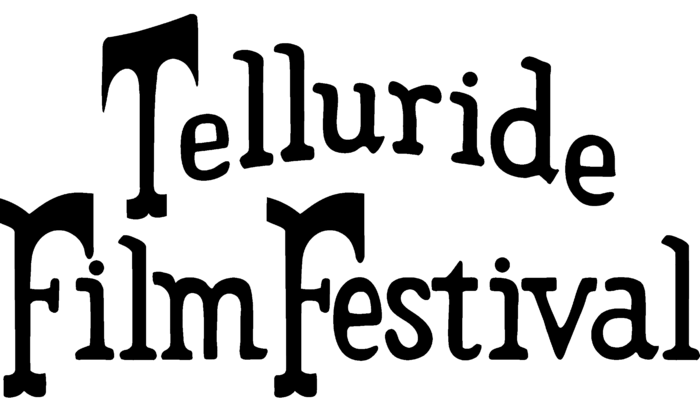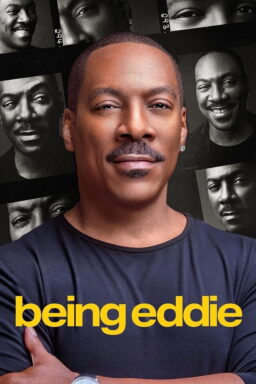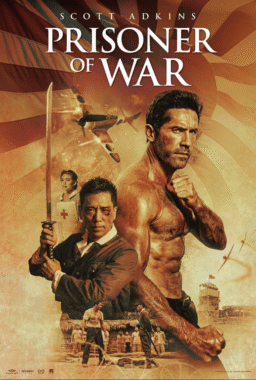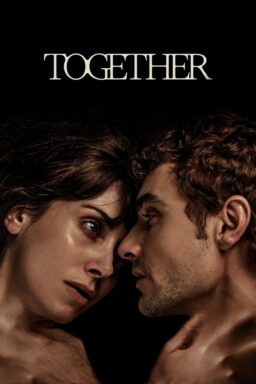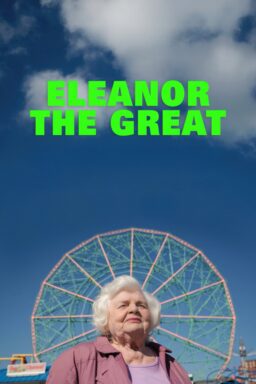Ah, the Show. At the beginning, greedily, you want to see everything. At the end, you tot up your totals—16 films over 4 days, with not one you wished you hadn’t seen, and several movies that you actually loved—and you still feel greedy for more. There are at least half-a-dozen other films you tried to stuff into your already overstuffed schedule, and wonder when you can get to see them IRL (in reel life).
But you know that watching the six episodes of Errol Morris’ “Wormwood” with the greatest of ease on Netflix, or Rebecca Miller’s “Arthur Miller: Writer” on HBO, or even Chloe Zhao’s “The Rider” or Andrey Zvagintsev’s “Loveless,” in Toronto or another festival setting, will not be be quite the experience it is in the idyllic filmic setting of Telluride.
As my old friend Gilbert Adair used to ask after some exciting performance: How was the audience? And Telluride’s audiences are the best: breathing in and out with the film, paying rapt attention, undistracted by texting or checking email or the tiny gleaming screens of others (That last is not only politesse, but adherence to Telluride’s strict policy: ONE SCREEN AT A TIME!)
On Friday, things get underway with a dazzling mountaintop brunch for people who’ve purchased Patron passes, which get you first admission into all screenings—but the brunch, whose offerings are supervised by friend of Telluride Alice Waters, is also a big perk: beautiful salads of local produce, amazing Colorado cheeses, bagels and Colorado smoked salmon, eggs cooked to order, tempting pastries. And a panoply of the guests of the festival: this year we chatted with Alexander Payne and Paolo Cherchi Usai of George Eastman House and Pordenone, were introduced to Jamie Bell (with new wife Kate Mara), and spotted a score of others, including Guest Director Joshua Oppenheimer and Francis Ford Coppola.
Up another mountain via the Gondola, with its exciting views that turn Telluride into a tiny toy town, for the press conference, where directors Tom Luddy and Julie Huntsinger highlight some of the more obscure films and conversations that one might miss among the more anticipated and starry offerings. They always pitch the silent film with live music, this year the Russian/French offering “Kean, or Disorder and Genius,” starring Ivan Mosjoukine, with Colorado’s own Mont Alto Motion Picture Orchestra. I tend to choose movies over Telluride’s panels, but the one they mention called Real-Life Wonder Women, featuring Billie Jean King, Angelina Jolie, Alice Waters, and Natalie Portman, moderated by Peter Sellars, does intrigue.

And then we start with Alexander Payne’s “Downsizing,” in which Matt Damon sees what life is like when you shrink down to six inches—both to save the planet and maximize your buying power. I am totally enthralled, amused, and moved.
Imagine my shock when I descend the mountain towards the main street and Telluride’s nine other venues, and find myself in a gondola with five people who did not feel the same way at all. Their main complaints are quibbles with the downsizing science (yes, I say, that’s what we go to the movies for, realism and accuracy in physics!), and the fact that they think the movie participated in too many genres: penalties for ambition. The patrons are patronizing me! I say, politely, what I often do in such circumstances: “I’m sorry I had a much better time than you did.” (When I’m the one who didn’t enjoy myself, I say, sincerely, “I WISH I had seen the movie you did.”)
I rush off, as quickly as I can, to the Werner Herzog Theatre to see Francis Coppola’s re-cut of his 1984 “The Cotton Club,” which I wasn’t aware of until hitting Telluride. He’d discovered a Betamax videocasstte of his original cut of the movie, when he’d bowed to the financier’s cries of “Too many black people! Too much tap-dancing,” (in a movie set in a nightclub with only black entertainers). And, as a labor of love, without the participation of the film’s owners (as “pirates,” Coppola told critic and movie executive Scott Foundas), he put together a new version, billed as “The Cotton Club Encore.”
At the moment there are no release plans (or even possibilities, legally). So it’s tops on my want-to-see list. And a lot of others, obviously, because when I arrive, breathless, at the Herzog, I am turned away, with scores of others: the 650-seat theater is full.
Reconsidering my options, I decide to swing by the very social, not to mention delicious, Opening Night Feed, which takes over blocks of Colorado Avenue and is open to all Festival attendees. This year it’s Asian-themed, with green papaya salad and shrimp banh mi sandwiches. I take the opportunity to compliment artist/director JR and producer Rosalie Varda on their wonderful “Faces Places (Visages Villages),” which had been a hit when it played out of competition in Cannes, and which I had seen on the huge outdoor screen on the Piazza Maggiore during the excellent Il Cinema Ritrovato festival in Bologna in late June/early July. I also compliment them on their sunglasses: JR, who is as handsome as any movie star, never ever removes his (Agnes Varda tries to get him to, in their movie). Rosalie’s are green and extremely chic.

The two remaining movies of the day are the affecting “Film Stars Don’t Die in Liverpool,” directed by Paul McGuigan from a book by a then-young British actor who had an affair with the much-older Gloria Grahame and then came to her aid at the end of her life. I’ve heard the drumbeats of Oscar buzz around Annette Bening’s portrayal of Grahame, but I’m even more a fan of Jamie Bell as her lover.
I stay in the same theater to see “Darkest Hour,” a classy offering from Joe Wright about Winston Churchill during a turning point in World War II, shortly after being chosen as Prime Minister. After seeing John Lithgow as a very tall, and very honored (nominated for a Golden Globe, winner of an Emmy) Churchill recently in “The Crown,” it’s instructive to see Gary Oldman’s accurately sized, astonishingly prostheticized Churchill—yes, a performance garnering well-deserved Oscar talk, again.
Saturday begins with another turn-away crowd for Angelina Jolie’s heartfelt “First They Killed My Father,” based on a book by Loung Ung. Ung was in attendance, along with two of the young stars of the movie and Jolie’s teenaged sons Maddox, born in Cambodia, and Pax, born in Vietnam (both of whom worked on the movie). “First They Killed My Father” is harrowing yet beautiful; I’m especially impressed by the dazzling overhead shots. Jolie puts her money where her heart is.
Afterwards I dash to the circa-1913 Sheridan Opera House (which was the site that originally influenced James Card, Tom Luddy, and Stella and Bill Pence to create the Telluride Film Festival) to see a Czech silent film, “Such is Life,” accompanied by Donald Sosins, which I’d seen year before last in Bologna. Telluride board member Milos Stehlik fills us in on the fascinating life of director Carl Junghans.
And then I am struck by Todd Haynes’ “Wonderstruck.” Some movies feel like they have been made just for you: personal touchstones in “Wonderstruck” include silent movies, misunderstood adolescents, running away, museums, used bookstores, Cabinets of Wonder, and the scale model of New York built for the 1964 World’s Fair. Afterwards Todd Haynes is interviewed onstage by another favorite, writer Greil Marcus. I’m fascinated by the trouble Todd and his casting people took to find the wonderful extras walking New York’s hot streets in the summertime ’70s: unworked-out but not overweight bodies.

Next up is the awarding of Telluride’s Silver Medallion to Christian Bale, after a clip show featuring his shape-shifting over four decades, from “Empire of the Sun” as a 12-year-old in 1987 through thin Bale in “The Machinist” in 2004 to fat Bale in “American Hustle” in 2013. Bale is sturdy and manly in Scott Cooper’s stately “Hostiles,” a classic Western that could have starred John Wayne (and sort of did in “She Wore a Yellow Ribbon”).
And then I close out the day with an 11 p.m. screening of “The Shape of Water.” En route to Telluride, I’d gone to see “Good Time” (and it was!) in Denver, and was somewhat dismayed to be treated to a long “The Shape of Water” trailer: I get an altogether too good idea of the look of the movie, all the main actors, the sets, and quite a bit of the plot. But even with the spoilers, “The Shape of Water” cannot be spoiled. I am entranced by the movie; ensorcelled, even. Elated. The actors I have glimpsed in the long, long trailer—Sally Hawkins, Octavia Spencer, Richard Jenkins, Michael Shannon—are uniformly superb. I laughed, I cried. I loved it. I stagger out after 1 a.m., fulfilled. I am only sad that Guillermo del Toro (introduced as William the Bull) did not return for a Q&A. Or to be carried aloft by cheering throngs.
By 9:30 a.m. on Sunday, I am sitting in almost the same seat in the same theater where I saw the overstuffed, highly colored “The Shape of Water” to see the beautifully austere “First Reformed” by Paul Schrader, who seems to gave taken the lessons of his own Transcendental Style in Film: Ozu, Bresson, Dreyer, to heart. Ethan Hawke, as a reverend marking time in a historical church with only a few followers, becomes involved with a troubled environmentalist married to one of his parishioners (wide-eyed Amanda Seyfried). It’s elegant, ironic, and finally rather mysterious and magical. Schrader credits old friend and NY Film Festival director Kent Jones, an early reader of the script, with helping him to change the ending from one inspired by “The Diary of a Country Priest” to one inspired by “Ordet.” Schrader says that he’s 71, and if this is his last movie, it’s a good one to go out on. I seize the moment to tell him that if he can make movies like this, he should absolutely continue to make more.
I dash to the Galaxy to see the aforementioned silent film “Kean,” restored and tinted by the Cinematheque Francaise. But, before the movie, I stumble upon an impromptu seminar being given by Guillermo del Toro on the lawn outside. He talks about his childhood — his father won the lottery (literally), and moved the family from a hovel to a mansion, which he fitted out with multiple encyclopedias. It was an encyclopedia of art that influenced del Toro’s fascination with composition, light, and color (he mention’s Manet’s fish belly-white skin tones, and Renoir’s pink ones, and Rembrandt’s lighting in general). He says that with “The Shape of Water,” he made a $40 million dollar movie for $19 million dollars. When asked if her prefers to work independently, or with major studio backing, he says, cheerfully, that making a film is “always a shit sandwich. Sometimes the bread is thicker or thinner, but there’s always shit involved.”

And then, in the same theater, I see Ai Weiwei’s “Human Flow,” a 146-minute would-be epic on the theme of refugees around the world. Timely, heartbreaking, beautifully shot, yet frustrating in the feelings of helplessness it engenders. Even the people working to improve the lot of the homeless and disenfranchised seem to be trying to empty the ocean with a teacup. I call it the feel-bad movie of the year.
Next, I see Greta Gerwig’s charming autobiographical take on her Sacramento girlhood, “Lady Bird,” starring the accomplished shape-shifter Saoirse Ronan, locked in almost-mortal combat with her mother (Laurie Metcalf).
From the charming to the annoying: I finish with guest director Joshua Oppenheimer’s pick of Werner Herzog’s “Even Dwarfs Started Small” (1970), which I found very difficult to take the one time I saw it in the late ’70s. Herzog says he hasn’t seen it since it came out; Oppenheimer says he sees it four times a year. I figure the movies stay the same but we change, so I’m willing to give it another whirl, in the intimate setting of the Opera House.
This time I’m more annoyed than unsettled by the cast of yammering little people, the car that spins in endless circles, the casual destruction of everything from crockery to life. I’m glad to have seen it in this context—Herzog explains some of its origins, charmingly—but I don’t think I ever need to see it again.
Labor Day, and the labors of Telluride are almost done. I’d hoped to catch up with “Loveless,” “Lean on Pete,” “Tesnota,” “Loving Vincent,” “Filmworker,” but it’s not to be. I absolutely HAVE to see the only other screening of “The Cotton Club Encore,” since a commercial release is not certain—Coppola spent his own money on the re-cut, but he doesn’t really own the rights to the movie, which is why he says that they did the work as pirates. I can only fit in one screening before it and one after.
I start the day in the tiny Backlot screening room (50 seats) with “Hitler’s Hollywood,” a fascinating if curiously argued clip show drawn from the movies made for Joseph Goebbels during the Nazi regime. (I am amused to see venerable festival director Peter Scarlet, now heading Mar del Plata, slip into the last remaining seat. Still a buff and up at 9 a.m. with the hoi polloi.)
Afterwards we all trot over to the Labor Day picnic, open to all Festival passholders, featuring hamburgers, ribs, chicken, wine, beer, ice cream sundaes, and one last chance to buttonhole the filmmaker of your choice. (Or more than one.)
I then race with some excitement to the other side of town to see “The Cotton Club Encore.” My run is interrupted when I pause to say hello to the radiant Chaz Ebert, who is signing books alongside Werner Herzog outside the Between the Covers bookstore. I start to speed off when I figure “Hey, it’s only money!” and I retrace my steps, hastily buy a copy of Herzog by Ebert and Werner Herzog—A Guide for the Perplexed: Conversations with Paul Cronin, and stand in line to get them signed by Chaz and Werner. Herzog points out that the scary photo of him with bear on the cover is not photoshopped but photographed by his very own beautiful wife Lena. As she is sitting nearby, I seize the chance to have her sign it, too.

Then I beat it on down to “The Cotton Club Encore” (finally!), pausing only to drop off the $70 worth of heavy books where I’m staying.
It’s worth the anxious wait. After a lovely introduction by the ebullient, funny Maurice Hines (I know he’s had a rich career in dance, but why hasn’t he been in more movies or on TV?), and the late Gregory Hines’ filmmaker son Zack, we see what I can only term a masterpiece: a beautifully designed, propulsive musical, that threads constant engaging and astonishing musical numbers through an equally engaging story of love, sex, family, mayhem, and money (everything, in fact, that makes life worth living). I love it. I hope the world gets to see it (so I can see it again.)
It would, as Paul Schrader said, have been a good one to go out on, but I have a couple of hours until dinner, and I see an odd, fitfully enjoyable little documentary about a deeply shallow British expat called “Jamaica Man.”
I join a bunch of giddy, battle-fatigued Tellurideans for my only sit-down meal of the Festival: fried chicken, mashed potatoes, gravy, succotash, and an actual glass of wine (yes, I am a party girl, when a screening is not in the offing). A debriefing of everybody’s viewing schedule ensues.
But, comes the dawn, alas, I’m being picked up at 6:30 a.m. in the morning to return to semi-reality. I take my leave, reluctantly. It’s been the greatest Show on earth.
